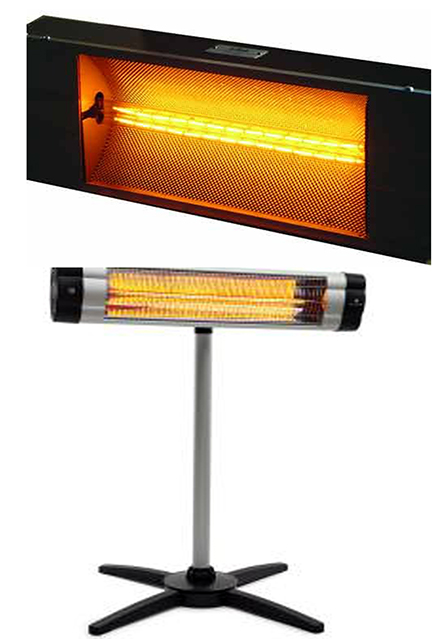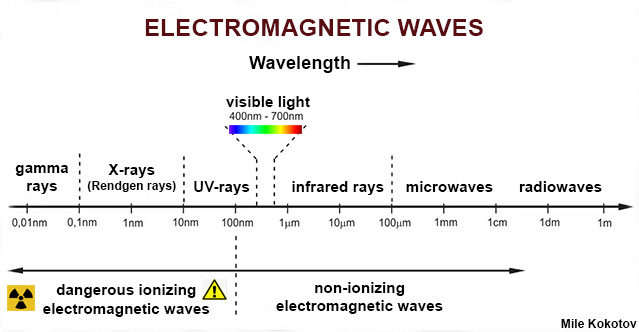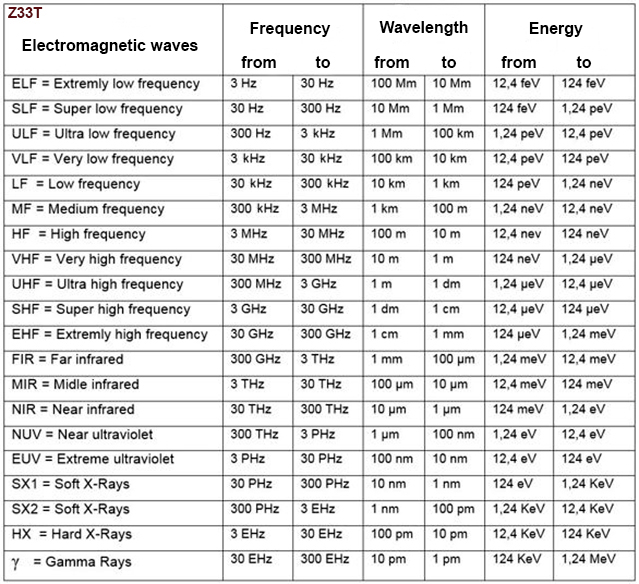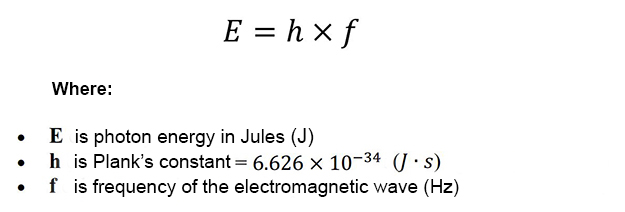DOES AND HOW DANGEROUS IS ELECTROMAGNETIC RADIATION
I Z33T home page I Z33T web pages in english I
DOES AND HOW DANGEROUS IS ELECTROMAGNETIC RADIATION?
For years, we are witnessing various speculations about the danger of exposure to radio waves and microwave radiation. So we can often read that the radiation from the cell phone base stations is harmful, and the WiFi routers we have at home are dangerous, than UHF/VHF/HF transmitters are dangerous also, etc.
We could recently read on the internet, that while experimenting with the new 5G technology, there was mass extinction of birds and other living organisms near the 5G-base stations ...
Short reminder: Cell phone base stations emit electromagnetic waves with a frequency about 800 MHz to about 2150 MHz. WiFi routers that we have at home emit electromagnetic waves in the microwave range with a frequency about 2.45 MHz and 5 GHz
More about basic characteristics of electromagnetic waves that includes radio waves and microwaves, you can read on this link.
(it is written in macedonian language, so you can use Google translate).
Here are some facts about electromagnetic waves:
Radio waves, microwaves, infrared radiation, visible light (which we can see with our sense of sight), ultraviolet radiation, X-rays, radioactive radiation and the most dangerous gamma radiation have the same nature, in that all of these radiations are electromagnetic waves, and they differ from each other only in their frequency, or wavelength.
The higher the frequency (smaller wavelength) of electromagnetic waves, the greater their energy. Electromagnetic waves that have a wavelength greater than 100 nm (100 nanometers) do not have enough energy to ionize tissues and are called non-ionizing electromagnetic radiation.
Non-ionizing electromagnetic radiation includes radio waves, microwaves, infrared radiation and visible light rays that we can see with our eyes. Non-ionizing electromagnetic radiation is not dangerous because it does not have enough energy to ionize tissues. The “worst thing” that non-ionizing radiation can do is to heat the tissue, and only if the intensity of that radiation is enormous and at a very short distance from the source of the non-ionizing radiation. This heating is used in the infrared heaters that we have at home to warm ourselves.
On the other hand, dangerous ionizing radiation starts with ultraviolet light rays, then on to the more dangerous X-rays, the even more dangerous radioactive rays, and finally gamma rays, which have the shortest wavelength (highest frequency) and are the most dangerous...
The human body has its own natural mechanisms with which it can cope even with dangerous ionizing radiation, if they are in smaller doses. Only large doses of ionizing radiation administered in a short time interval can permanently damage living tissue, and then that ionizing radiation is truly dangerous.

And now, I will slightly explain how radio waves and microwaves as a part of the electromagnetic spectrum are dangerous, comparing them with other, far more powerful sources of electromagnetic radiation, which almost all of us have in our homes: The infrared heaters for example!
Infrared heaters emit electromagnetic radiation in the infrared range of the spectrum. Infrared rays have a lower frequency than the visible light. The frequency of infrared rays is much higher than radio waves and microwaves, so infrared electromagnetic waves have much greater energy than radio waves and microwaves. In addition, the infrared heaters we use for heating our houses have very high power (2 to 4 kW), and the radiation is additionally amplified with a reflector from behind, and no one complained that he was disturbed or was "irradiated" and felt bad...
However, you can hear very often that "radiation from WiFi routers is dangerous" or "radiation from cell phone base stations is dangerous" or "radiation from radio transmitters is dangerous" ...
Such claims simply do not have a scientific and practical basis, since apart from that the frequency of WiFi routers and radio waves is far lower than the infrared rays (in which warming we enjopy at home during cold days), the power of the infrared heater is much higher (2, 3 or 4 kW, versus <0.1W of WiFi routers)
The electromagnetic waves energy is proportional to their frequency. Electromagnetic waves with higher frequency have more energy.
The radio waves and microwaves (because their frequency is lower) have much less energy than the infrared rays of the electric infrared heater that gives us pleasure warming at home.
Plus, the power of a WiFi router is thousands of times less than an infrared heater...
Therefore, do not trust the various sensationalistic journalistic articles or quasi-experts who want to "become famous" by placing evidence of "deadly radio waves" from cell phone towers and WiFi routers.
There is electromagnetic radiation that is really dangerous and that is ionizing electromagnetic radiation:

The electromagnetic waves on the right side of the image above have a long wavelength. These include radio waves, microwaves, infrared rays, visible light and some ultraviolet rays. They are all non-ionizing electromagnetic waves and do not have the energy to ionize tissues. The further left you go in the image above, the more energy the particles (photons) of the electromagnetic waves have.
On the far left side of the image above, are the dangerous and harmful ionizing electromagnetic waves. These electromagnetic waves have a very high frequency (extremely short wavelength) much smaller than the wavelength of visible light. Dangerous ionizing electromagnetic waves start with ultraviolet light, then continue to X-rays and radioactive rays....
In the following table, you can see that the higher the frequency, i.e. the shorter the wavelength of the electromagnetic waves - the more energy they have:

(You can read a further explanation of the energy of electromagnetic radiation at the end of this article).
Therefore, my dear ones, be happy ... Electromagnetic radiation from cell phone towers and Wi-Fi routers will not harm you. That is for sure!
They are tens of thousands of times less harmful than an infrared heaters that we use at home, enjoying in their pleasant warm harmless rays. ![]()
And another thing: Next time, when someone tells you how dangerous the radio waves and microwave radiation is, remember how much we want to sunbath tanning in summer, in order to get a beautiful dark skin...![]()

The sun has an energy of about 1000 W per m2 of horizontal surface (for the geographic location of Macedonia) and its rays are with a much higher frequency than the radio waves, which means that solar radiation is millions of times more dangerous than a nearby radio station or WiFi router, or the radiation of the cell phone base stations ...![]()
Furthermore, we all have electric lamps at home, at office and almost everywhere, some of which are several times the power of base stations from cellular networks. Lamps emit electromagnetic waves with much higher frequencies than electromagnetic waves on 5G networks. Moreover, our lamps are at home, just above our heads. So no one complained that the lights were dangerous!

The International Commission on Non-Ionizing Radiation (ICNIRP) has issued recommendations on a safe level of electromagnetic radiation based on a range of scientific research and experience. The recommended maximum values of non-ionizing radiation are increasing year by year as it is evident that unlike ionizing radiation, ionizing radiation has no harmful effects on human health. The most damaging thing non-ionizing electromagnetic waves can do is heat the tissue a bit, if they have much more power than is used in 5G networks.
The author of this article, for the purpose of a master's thesis, has carried out a series of scientific measurements and examinations of the maximum values of electromagnetic radiation at the forty most critical points in the city of Stip, Macedonia. The conclusion is that at no point does the value of electromagnetic radiation exceed one tenth of the recommended maximum values by ICNIRP.
At the end:
You may find some research, where there are statements by some surveyed people who say that they have headaches or other harmful manifestations when they are in places radiated by radio waves or microwaves. For harmfulness or not, of the non-ionizing electromagnetic radiation there is a lot of speculations. That is for sure. However, besides pleased warming of human body tissues in the presence of very strong radio waves, microwaves, infrared waves to visible light, there are no other practical and measurable effects to the peoples. The comparison above, that each of us is exposed to extremely strong electromagnetic waves from infrared heaters at home and from the sun outside, (which is very pleasant to us), while the radio waves in the air are millions of times weaker, says enough..
I assure you that if someone claims to have a feeling that radio waves have a negative impact on him, then this is due to his consciousness, continuously exposed to various allegory stories about the "dangerous" radio waves. In science, it is known as "Nocebo effect" and refers to examples in which negative suggestion in some people leads them to really have consequences for their health.
More about the so-called "Nocebo effect" you can read on these links: (1) , (2) , (3) , (4) ...
- - - - - - - - - - - - - - - - - -
Additional explanation of the energy of electromagnetic waves and the ability to ionize matter or tissue
1. Electromagnetic waves and energy
Electromagnetic waves have a quantum nature. Electromagnetic radiation is a stream of photons, that is, particles without mass but with energy that is proportional to the frequency of the electromagnetic waves.
Photons are particles, corresponding quantum of electromagnetic radiation. They are energy packets that carry the energy of electromagnetic waves.
Electromagnetic waves have different frequencies and wavelengths that are related to the energy of the photons through the equation:

The energy of photons is expressed in electron volts (eV).
An electron volt is a unit of energy often used in atomic and quantum physics.
The energy of photons as carriers of electromagnetic radiation is calculated using the above equation (E=hf), often expressed in eV when it comes to atomic and molecular processes.
2. Ionization
Ionization is a process in which an atom or molecule of a substance (tissue) loses one or more electrons, turning it into an ion.
The minimum amount of energy required to cause ionization is called the ionization potential.
When photons from electromagnetic radiation have sufficient energy (expressed in eV), they can eject an electron from the electron shell of the atom's nucleus, thus causing ionization.
Electromagnetic radiation with a wavelength of less than 100 nanometers (nm) can already have enough energy to cause ionization.
For example, ultraviolet (UV) radiation already has a high enough frequency (a sufficiently short wavelength), and therefore a high enough energy (10 to 100 eV) to cause ionization of atoms and molecules.
X-rays have an even higher frequency, and therefore an even higher energy, so they can ionize deeper electronic layers.
Gamma rays have the highest frequency and the highest energy, with which they easily cause ionization of the deep electronic layers of matter, i.e. tissues.
In the following table, it can be seen that the higher the frequency, i.e. the shorter the wavelength of the electromagnetic waves, the greater the energy they have:

3. Intensity of electromagnetic radiation
The intensity of electromagnetic radiation (the amount of energy transmitted per unit time per unit area) is related to the number of photons passing through that surface. The greater the number of photons passing through a surface, the greater the intensity of the electromagnetic radiation.
As an example, I will use weak and strong light (light is part of the electromagnetic spectrum and represents electromagnetic radiation).
For example, weak light has fewer photons, but each photon has the same amount of energy as stronger light of the same frequency.
Stronger light has more photons of the same frequency, so we say that the intensity of the radiation is greater.
4. Photons and the spectrum of electromagnetic radiation

The electromagnetic spectrum (radio waves, microwaves, infrared rays, visible light, UV rays, X-rays, and gamma rays) can be sorted by the energy of the photons.
For example:
- Radio wave photons have the lowest energy
- Microwave photons have higher energy.
- Infrared photons have even higher energy
- Visible light photons have even higher energy
- Ultraviolet photons have even higher energy
- X-ray photons have even higher energy
- Gamma ray photons have the highest energy.
- - - - - - - - - - - - - - - - - -
Mile Kokotov (2018)
The Author has a master`s degree in technical science and 40 years experience in RF-Technology. He is also President of The Radio Amateur Society of Macedonia.
See also other articles and projects on his website
I Z33T home page I Z33T web pages in english I